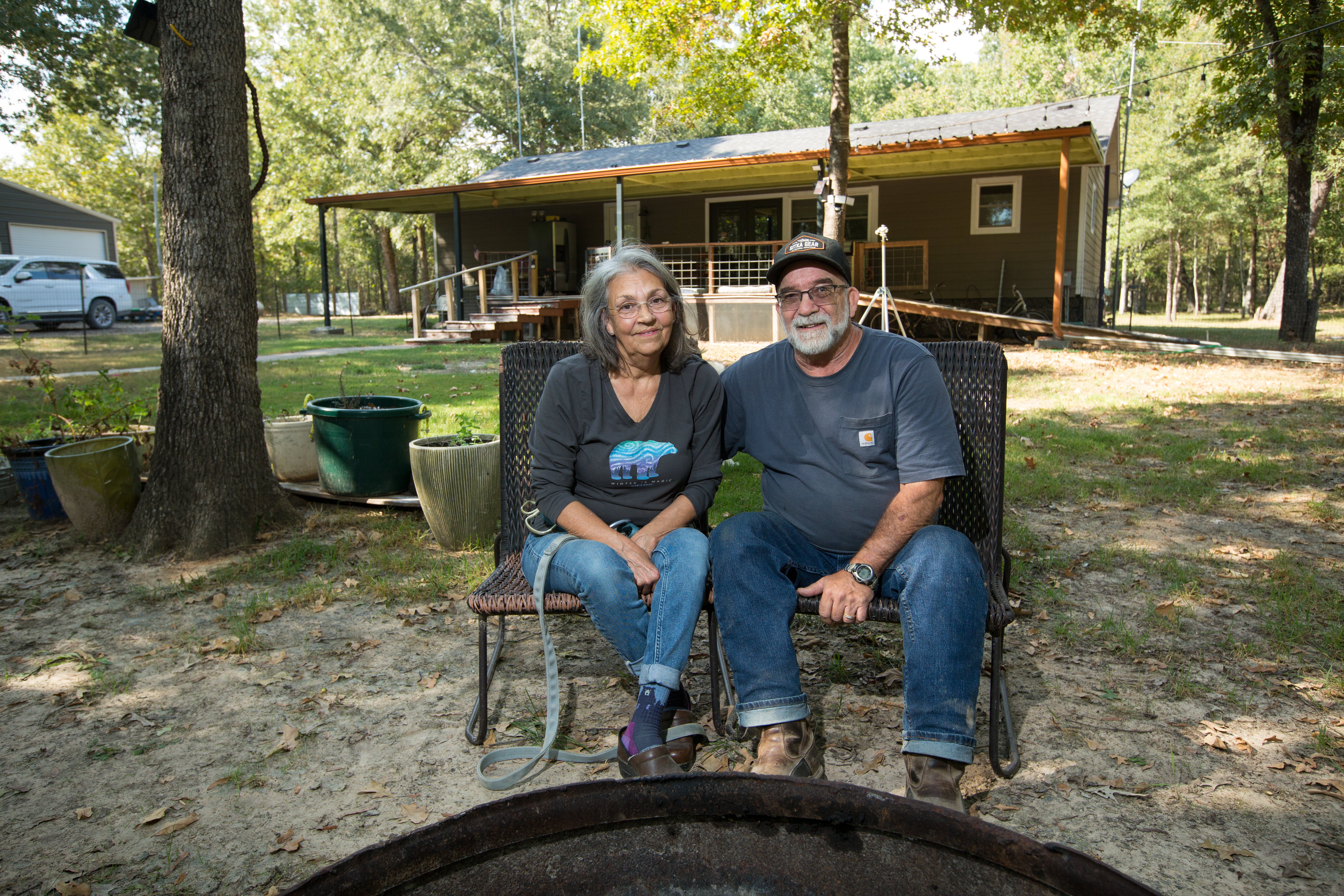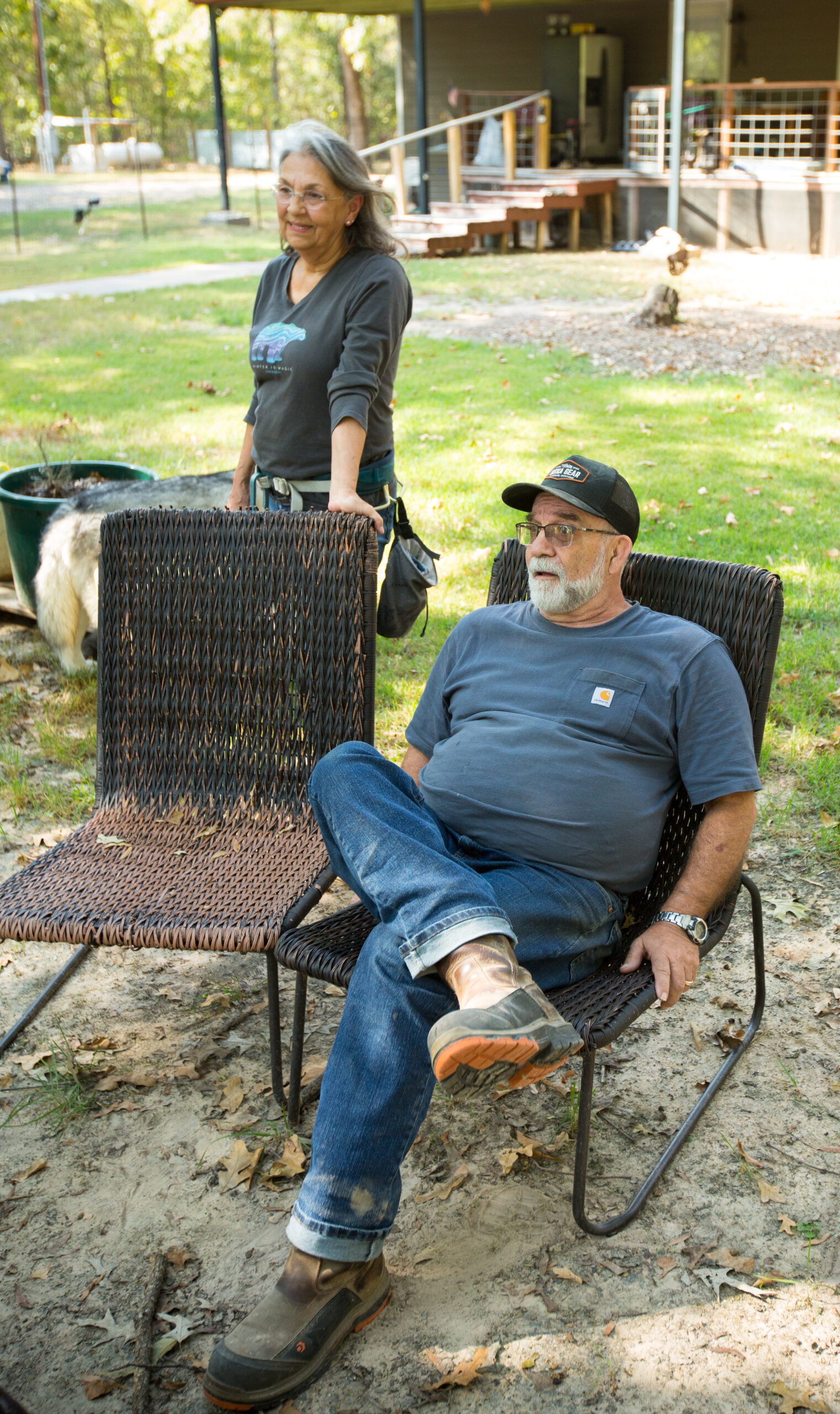Jim & D.D. Vignali
“Usually, you see 10 or 15 deer out here,” said Jim Vignali as he sat in a lawn chair relaxing in his backyard. “You just missed them.” There is a large garden on his multi-acreage property where he grows his own food. “This would all be annihilated,” he said in reference to the fate of his property in Bogata, Texas if the Marvin Nichols Reservoir is allowed to be built.

Jim and DD Vignali moved to a peaceful wooded area in the Red River County part of Northeast Texas from Dallas to escape the fast-paced urban way of life and to own some land to live on in their retirement years. “We bought the property in 2013 and basically gutted the house and put it back the way we wanted it. Then, we physically moved out here in 2017, two months after I retired. So this is our retirement,” said Jim. “We have 40 acres,” he said as he showed the part of his property that had been cleared near the house; the rest is a thick wooded area.
While the Vignalis may have manifested their dream of being rural landowners, it could be somewhat short-lived for their family, as well as others in Northeast Texas, if Marvin Nichols stays in the State Water Plan.
The Marvin Nichols Reservoir, proposed on the main stem of the Sulphur River in Red River, Titus, and Franklin Counties, would flood 66,000 acres of farmland, hardwood forest, and wetlands. An estimated 130,000 additional acres would be removed from private land ownership for mitigation required by the federal government. The impacts will be felt across the entire region. The reservoir would pump at least 80% of the water 150 miles to the DFW area. The water project would force thousands of property owners off of family lands, drown resources that would be devastating to the timber and agriculture-based economy in the region, negatively impact wildlife habitat, and inundate cemeteries and archaeological and historic sites.
What’s more, water usage reports show that DFW Metroplex has sufficient resources for household and business needs; what is driving the desire to build the reservoir is primarily the demand to water lawns and fill swimming pools.
“We walked through the neighborhoods of Bedford, and we’d see people draining their pools three and four times a summer,” Jim said of his experience living in Dallas. “Water would be running down the street and chemicals in it would kill their grass.”
The Vignali couple offered a few solutions water planners in the Dallas-Fort Worth area could consider as options that would not require the use of eminent domain to strip land and homes away from Northeast Texans. “They can conserve water,” Jim suggested. “There are multiple ways they can conserve water in the Dallas Metroplex. And they’re taking, from what I’ve seen and read, zero actions that have a real substantial effect. Zero,” he said. “There are so many more actions they could take to conserve water, but for the builders and water board people, this is all about money,” he said referring to the dollars that would flow to engineering and constructing the Marvin Nichols Reservoir. The cost to taxpayers was estimated at $4.4 billion back in 2018 and will no doubt cost more with inflation today. “[The people of DFW] could do more, they don’t need to spend $4 billion. They could look into an exploratory thing on just the infrastructure. I’ll bet it’s actually leaking right now. There are millions of gallons just running into the dirt. But there’s not as much money in that as there is in building a new reservoir.”

DD Vignali stands next to her husband Jim on their 40-acre plot of land in Northeast Texas where the couple moved from Dallas for retirement. Their property, home, and dream of living out their retirement in the beautiful wooded area of the state are currently threatened by the proposed Marvin Nichols Reservoir.
Indeed, Texas lawmakers are taking a look at this very issue. State Senator Charles Perry has introduced legislation to create a “Water for Texas Fund” that would address outdated water infrastructure across the state. He recently noted that “There’s an estimate that 70% of the pipes in the ground are at or over their estimated life, and we lose almost 150 billion gallons of water a year.”
Taking away land from those Northeast Texans in the footprint of the proposed Marvin Nichols Reservoir is not just bad for the individual landowners, but bad for the local community and regional economy as well. “Look,” said Jim. “Running all these people off [of their properties is a big problem]. What are they going to do? There will be no tax base to do anything there.” He is not wrong. A healthy tax base is comprised of taxpayers who help support school systems and more. That will all be jeopardized in Northeast Texas if people are forced from their properties through eminent domain to build the reservoir.
“You pay your taxes. You buy your property,” said DD. “Now, [we have to worry that] they’re just going to take it away just because they can.”
